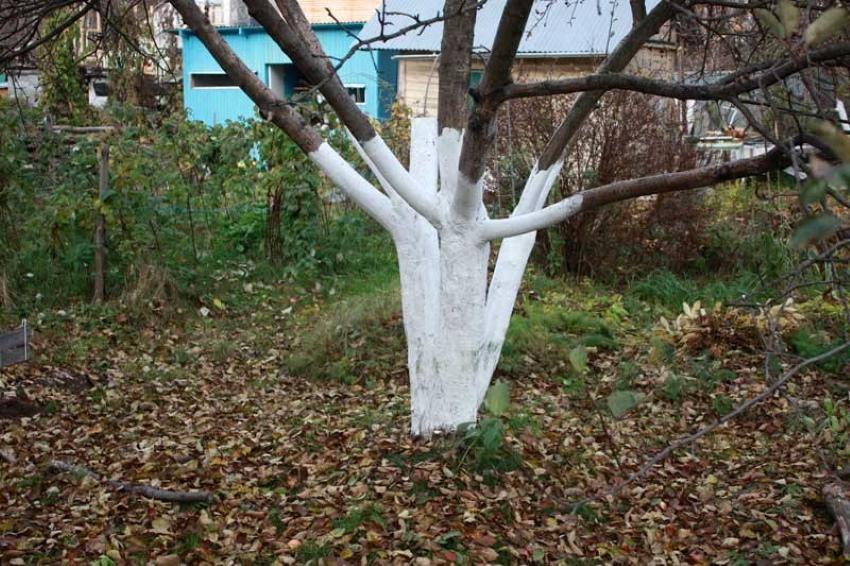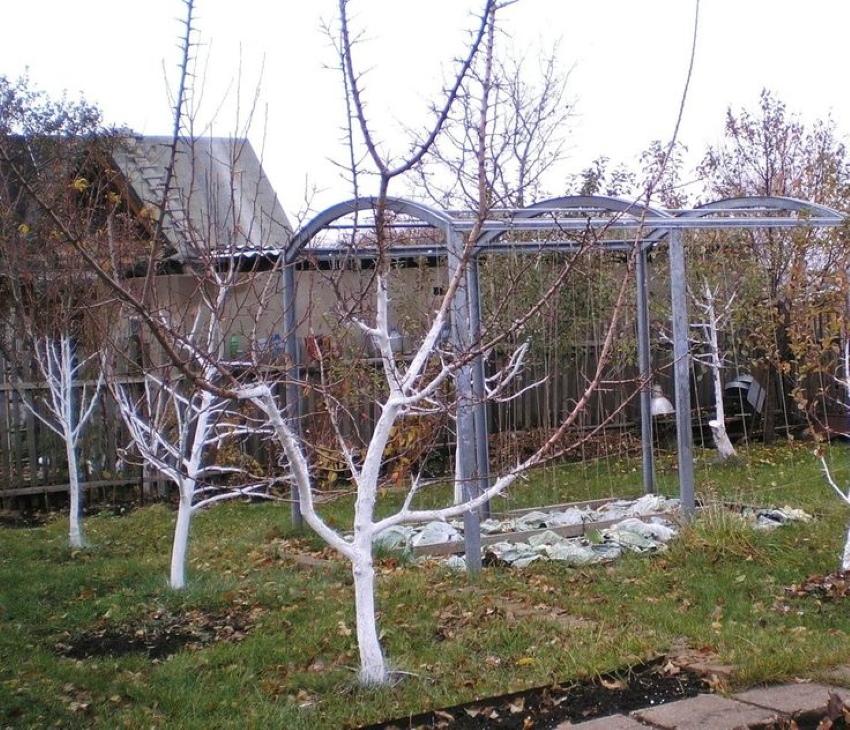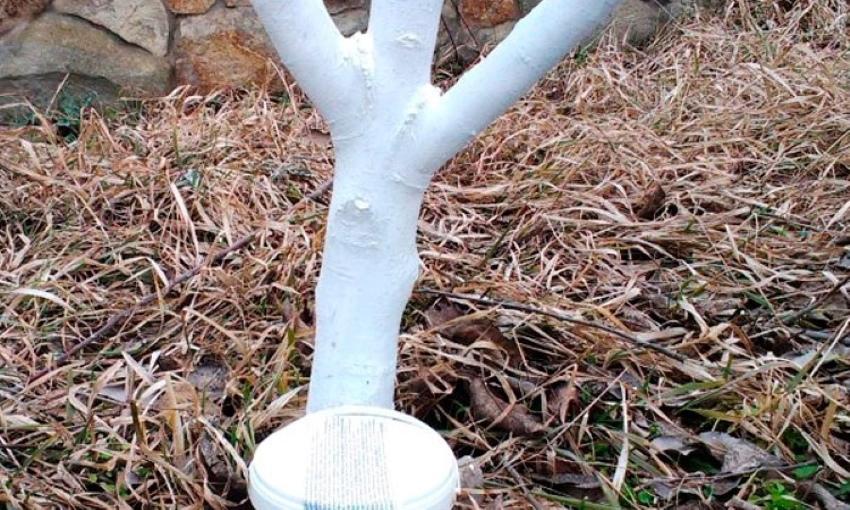When to whitewash fruit trees in autumn - important nuances of gardening
 A well-groomed garden with slender rows of trees, dressed in white skirts after whitewashing, is pleasantly pleasing to the eye in spring. However, over the summer, rains often wash it off, so it is important to renew the protective layer before the onset of frost. Knowing when to whitewash fruit trees in autumn, you can not only give the garden an aesthetic look, but also help in wintering and protect from diseases and pests.
A well-groomed garden with slender rows of trees, dressed in white skirts after whitewashing, is pleasantly pleasing to the eye in spring. However, over the summer, rains often wash it off, so it is important to renew the protective layer before the onset of frost. Knowing when to whitewash fruit trees in autumn, you can not only give the garden an aesthetic look, but also help in wintering and protect from diseases and pests.
Why do you need autumn whitewashing in the garden

But the most important thing in autumn whitewashing is protection from frost damage and burns. The temperature drop, when it is warm during the day and frost rages at night, leads to sad consequences. Under the influence of the sun, sap flows under the bark, and at night the sap freezes from frost. As a result, the bark on the trunk cracks, and frost cracks appear. Through them, trees become vulnerable to disease and pest attacks. A layer of white paint or solution repels the sun's rays and prevents the awakening mechanism from starting. Whitewashed trees are not afraid of frost, get sick less often and live longer.
A double whitewashing of the garden is considered optimal: in spring and autumn. If a solution is used that is easily washed off by rains, the trees that have lost their protective layer are whitewashed again in the summer.
When to whitewash fruit trees in autumn
 It is necessary to process the garden in dry weather, but the most important thing is to have time before the arrival of the first frost. The temperature must still be positive. Many gardeners are guided by leaf fall, but this is approximately the month of October.
It is necessary to process the garden in dry weather, but the most important thing is to have time before the arrival of the first frost. The temperature must still be positive. Many gardeners are guided by leaf fall, but this is approximately the month of October.
The better to whiten
Everyone has their own "favorite recipe", but in general, three preparations can be used for whitewashing:
- The usual lime... 3 kg of lime is enough for a bucket of water. In addition, add a little paste so that the whitewash adheres well. And in order for the solution to serve also as a disinfectant, 0.5 kg of copper sulfate is added. For young seedlings, use a less concentrated solution.

- A piece of chalk. It is bred using a technology similar to the preparation of a lime solution.

- Water-based paint. It is harmless to mature trees and does not require additional components.

- Water-dispersive garden paint. Contains many useful additives and stays on trunks for up to 2 years.
